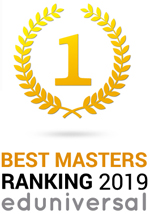Collaboration for the Common Future? Integrative Public Leadership in Local Governance Practice
Besides routine tasks of public service, today’s public managers are confronted by an increasing number of major public issues, such as climate change and refugee crises, which would chronically threaten the survival and development of human society in the future. Addressing these issues requires longstanding cross-sector collaboration and governance. Yet there is still a lack of knowledge about how this type of collaboration, as we term it, ‘collaboration for the common future’, could be enacted.

November, 12 2019 | Tie Cui & Stephen Osborne
This short paper contributes to filling this knowledge deficit. It draws from a carbon reduction context at city level and adopts the analytical viewpoint of integrative public leadership (Crosby and Bryson, 2010), which examines the integrating process of multiple sectors in the governance of public services. Existing research on public leadership has laid a solid analytical foundation (e.g. Murphy et al., 2017), which identifies several supporting mechanisms of the leadership process. However, it may not fully capture the long-term characteristic of governance targets and offers little understanding of individual actors’ motivations and actions.
This paper builds on the study of ‘value co-creation’ to further the discussion of integrative public leadership. The study of value co-creation in public management concentrates on the analysis of what and how ‘value’ could be created in public service delivery (e.g. Alford, 2016, Bryson et al., 2017, Hardyman et al., 2015, Osborne et al., 2013, Osborne et al., 2016, Osborne, 2018). In this context, value encapsulates five elements—short-term satisfaction, longer-term outcomes, lived experience, capacity creation and public value. It can accrue to the individual, to the service delivery system and/or to the community/society. It can be created both in the public service production process and in the use of these services and occurs in the context of the lives of those people producing or using a public service (Osborne, 2020).
We suggest here that exploring value co-creation from a micro-level approach presents opportunities to observe the individual actor’s participation behavior and on this basis better understand flows, changes and relationality within the macro-level process of integrative public leadership. Therefore, by combining a series of case studies of public leadership and value co-creation, we address two key questions for policy and practice: (1) How does the integrative leadership process evolve in practice? and (2) How is it enabled by the value co-creation mechanism in the long-standing governance context?
Our empirical evidence comes from an embedded case study of the City of Edinburgh Council’s carbon-emission reducing practice and programs. These include carbon literacy pilot training (a series of accredited training sessions with the aim of rolling out a carbon education scheme—Carbon Literacy—across the city), a community-owned solar photovoltaic project (24 council buildings had solar panels installed by using the £1.5 million building capital raised from a community share offer—541 share buyers would receive an annual return on investment in 20 years), and the Active Travel project (a Council-Scottish Government jointly funded strategic project aiming at encouraging more walking and cycling in Edinburgh). The fieldwork lasted from October 2017 to December 2018 and included 36 semi-structured in-depth interviews, 12 ethnographic observations, and almost 200 text or video documents.
A three-stage model of the integrative leadership process
Generally, the three cases tell three different local governance stories. The Carbon Literacy pilot project shows the establishment and disruption of a comparatively weak organizational alliance. The solar farm project shows a more complicated leadership process, within which the social innovation is remarkable in terms of linking the long-term target of renewables generation to concrete private value creation such as the investment return. The Active Travel project shows a difficult social mobilization process which was promoted by active actors, an open network structure and steady investment commitment.
Through the inspection of three sub-cases, we found that all three projects shared a similar leadership process route: starting from the connection of small groups of key actors, gradually expanding the coverage and influence of the collaborative network, ultimately obtaining enough support from society and building a positive interaction mechanism with the external environment over the long term. We conceptualize this macro-level leadership route as a three-stage model incorporating three sequential coordinating stages between key leaders, network actors and external environment: (1) The coupling of key leaders, which refers to the initial alliance between core actors who negotiate the original project initiative and conduct the basic consensus about the shared targets and project design; (2) The integration of actors, which refers to the establishment of a more extensive cross-sector network surrounding the key leaders’ coupling. In this stage, the project’s initiative is spread and a greater aspiration about the collaboration is achieved through the involvement of more actors; (3) Linking the network to the external environment. In this stage, the cross-sector network attempts to interact with the external environment across the boundary of the collaboration network, by which embedding itself into the broad social condition and obtaining continued community support.
Our three-stage model depicts the macro-level process of integrative leadership as a fragile progressive evolution. Based on that, we investigate individual actors’ participation behaviors at the meso-level. We found that the private value creation mechanism not only creates value for individuals but can also incentivize them at the organizational level. Hence these value chains drive individual actors’ behavior and underpin the whole integrative leadership process as both the facilitator of network formation and the adhesive of network structure.
Two structural characteristics of the private value chain are further identified: (1) Multi-win. Different actors create their private value along their individualized routes according to their diversified private values—the private value chain is multithreaded; (2) Small win. Before the realization of the long-term value target, each private value chain incorporates several intermediate value outcomes. These periodical value outcomes, as ‘small wins’ before the achievement of the final collaboration target (the ‘big win’), are tangible and occur at particular moments in time. They are essential for encouraging trust, building confidence and generating persistent collaborative momentum in the network.
We subsequently investigated the creation mechanism of private value at the micro-level. We found that, in one single small-win cycle, private value is created through three sequential links: (1) The value commitment link, in which individual actors identify their own short-term private value target and make the commitment to collaboration; (2) The value proposition link, in which the cross-boundary collaboration network offers certain services or products, as a kind of ‘value proposition’, to its actors; and (3) The value creation link, in which individual actors make use of the services or products in different approaches to create diversified private value for themselves. The real value outcome would subsequently influence actors’ evaluation of the collaboration, consolidating or weakening their commitment, and eventually encourage actors to continue to participate in the collaboration or to secede from it.
Implications for policy and practice
On the basis of this research we have evolved a holistic process framework to explain the evolution of the integrative public leadership across macro-, meso- and micro-levels. We therefore suggest four implications for policy and practice. First, beyond other collaboration-supporting mechanisms identified in the literature, our framework stresses the role of value co-creation as the fundamental condition for cross-boundary collaboration, especially when the target is addressing long-term major public issues. Public service leaders (including public service managers, politicians, and/or community leaders) working within such collaborations therefore have to explore the individual, service and community value creation processes embedded within the collaboration and how they interact. Second, such leaders also need to be aware of the societal values underpinning the collaboration and how these interact with the personal values of the service staff and users.
Third, and confirming other literature, our framework stresses the complexity and uncertainty of the governance of complex organizational collaborations. Poorly led, they can destroy value for the individual and the community rather than create it. Collaboration is not a panacea for the failures of existing services but a complex organizational process to be governed and led in its own right and the leadership of which requires specific governance skills for those involved (e.g. Bryson, 2004). Fourth, our framework reveals that private value chains can vary considerably across the actors within a collaboration (both service staff and service users), according to their prior values, experiences and expectations. Collaboration leaders need to engage with these prior values, experiences and expectations if they are to successfully lead the collaboration. Moreover, these prior elements can and will vary across the actors in a collaboration and so collaboration leaders need to be prepared to arbitrate and negotiate across these differing value positions if they are to successfully govern the collaboration.
In conclusion
Our approach requires a re-orientation by the leaders of public service collaborations, as well as by the service staff and service users involved. To date, the focus has been upon the service level alone. Our framework concentrates instead on the role of individual and community values and value creation. This implies the need for dedicated training for all the actors in a collaboration. Facilitating and negotiating the links between individual and service-level value creation is essential to address the paradox between the long-term (societal) value creation objectives of a public service collaboration and the short-term value creation needs of its actors and participants. In particular our framework identifies the importance of ‘small wins’ in facilitating this process. Hence a conscious (re-)design of public services and public service collaborations from the perspective of value creation is an essential first step. Finally, nothing in our work suggests that public service collaborations will always lead to positive value creation for its actors and participants. Value destruction is an equally possible outcome if the collaboration is poorly led. This is the challenge for effective integrative public leadership in the future.
Tie Cui is doctoral Fellow at the University of Edinburgh Business School, Scotland. Stephen Osborne is Chair of Public Management and Director of the Centre for Service Excellence, University of Edinburgh Business School, Scotland. He is the current (and founding) editor of the ABS 3* journal Public Management Review and the founder and Immediate Past President of the International Research Society for Public Management (IRSPM).
References
ALFORD, J. 2016. Co-production, interdependence and publicness: extending public service-dominant logic. Public Management Review, 18, 673-691.
BRYSON, J. 2004. What to do when stakeholders matter: stakeholder identification and analysis techniques. Public Management Review, 6, 21-53.
BRYSON, J., SANCINO, A., BENINGTON, J. & SØRENSEN, E. 2017. Towards a multi-actor theory of public value co-creation. Public Management Review, 19, 640-654.
CROSBY, B. C. & BRYSON, J. M. 2010. Integrative leadership and the creation and maintenance of cross-sector collaborations. The Leadership Quarterly, 21, 211-230.
HARDYMAN, W., DAUNT, K. L. & KITCHENER, M. 2015. Value co-creation through patient engagement in health care: a micro-level approach and research agenda. Public Management Review, 17, 90-107.
MURPHY, J., RHODES, M. L., MEEK, J. W. & DENYER, D. 2017. Managing the entanglement: complexity leadership in public sector systems. Public Administration Review, 77, 692-704.
OSBORNE, S. P. 2018. From public service-dominant logic to public service logic: are public service organizations capable of co-production and value co-creation? Public Management Review, 20, 225-231.
OSBORNE, S. P. 2020. Public Service Logic, London, Routledge [in press].
OSBORNE, S. P., RADNOR, Z. & NASI, G. 2013. A new theory for public service management? Toward a (public) service-dominant approach. The American Review of Public Administration, 43, 135-158.
OSBORNE, S. P., RADNOR, Z. & STROKOSCH, K. 2016. Co-production and the co-creation of value in public services: a suitable case for treatment? Public Management Review, 18, 639-653.






















It is mandatory to be registered to comment
Click here to access.
Click here to register and receive our newsletter.